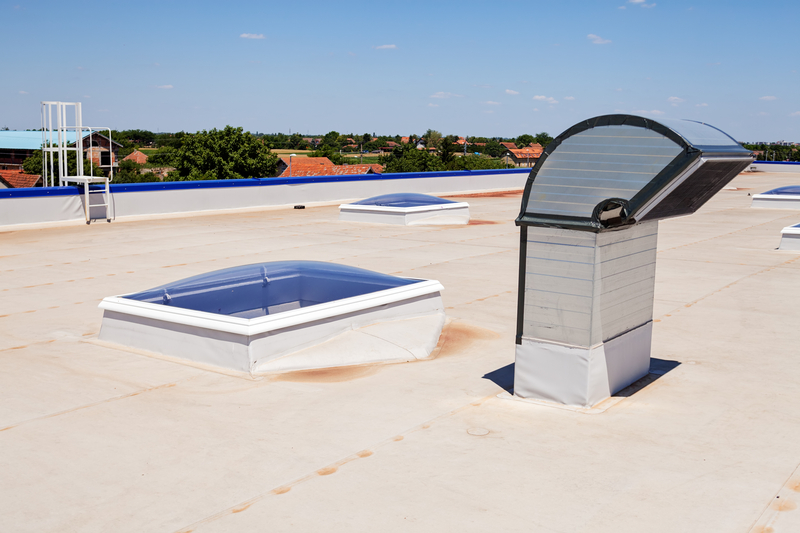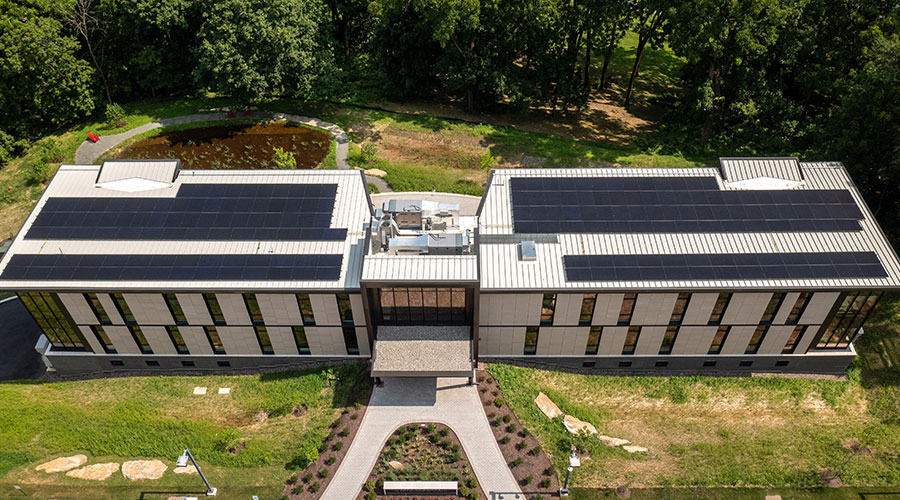Proper Installation and Maintenance Keys to Good Single-Ply Roofing
Part 2 of a 2-part article exploring what's required for single-ply roofing success.
2. Proper Installation
A good design alone can’t ensure a good roof. Pay attention to the way the roof is installed.
• Be sure the metal termination is properly fastened using fasteners appropriate to the substrate and sufficient to resist the wind. Don’t allow contractors to tightly butt the termination bars or cross expansion joints with a solid bar.
• Be sure there are no gaps greater than one-quarter inch between insulation boards. Larger gaps can weaken the membrane from flexing due to thermal movement or foot traffic and can more easily crack.
• Check welded seams to be sure the welds meet the minimum width required by the manufacturer. Less than minimum can mean the seam is not strong enough or that any tiny defects in the welds can run through the seam and cause leaks. Especially check the welds at the ends of the seams where the weld changes from a machine-made weld to a hand weld. This is the most likely place to find weld defects or missing welds.
• Be sure the contractor has cleaned the edges of the membrane thoroughly before welding or adhering the seams. Dirt and other contaminants in the area of the seam will assure a seam failure and a leak.
• Require the contractor to put patches at the ends of runs where the seams end in a “T.” Overlapping seams have more chance of having bad welds or lack of adhesion than do straight seams and the patch will change this situation from a T seam to a straight one.
• Probe the seams twice a day (using a rounded tip) during installation to be sure the seams are tight.
• Be sure the contractor is installing the specified amount of attachment — regardless of whether it is adhesive or mechanical. This is especially true of foamed urethane adhesives. Because the adhesive will expand, it is sometimes hard to judge the installed amount.
• Access doors and ladders should have walk pads in front of them to minimize wear on the roof membrane.
3. Ongoing Maintenance
Facility managers play a crucial role in the long-term performance of a single-ply roof. Here are some of the factors that require attention:
• Examine the roof periodically to be sure seams are intact and there are no loose terminations or punctures in the field membrane or flashings. An inspection should be made at least twice a year (spring and fall) and after every major storm so that small problems can be addressed before they become major issues.
• Make any necessary repairs as soon as possible. Do not allow repairmen to use inappropriate repair materials. Roofing cement is not appropriate for any type of single-ply membrane repairs. Do not mix membranes. TPO should be used to repair TPO, PVC with PVC, EPDM with EPDM, etc. Tape-type peel-and-stick repair membranes should be tested for adhesion and compatibility with the membrane or only used for temporary repairs. Some repair tapes will delaminate from the single-ply membrane quickly or will damage it.
• Enforce use of the walk pads by repair and maintenance personnel on the roof.
• Look for fasteners poking their heads up through the membrane. As mechanically fastened membranes age and the insulation compresses, the fastener head can puncture the membrane. Have this repaired as soon as possible.
If you have felt like you’re going crazy dealing with persistent roofing problems, you can probably sympathize with Alice when the Cheshire Cat tells her:
“We’re all mad here. I’m mad. You’re mad.”
“How do you know I’m mad?’ said Alice.
“You must be,” said the Cat, “or you wouldn’t have come here.”
By taking care with the design and installation of the new single-ply roof, and providing regularly scheduled maintenance once it has been installed, you can avoid your own version of Alice’s fate: going down the rabbit hole to the madness of roofing Wonderland.
Karen L. Warseck, AIA, LEED AP, is a registered architect and president of Building Diagnostics Associates. She is a contributing editor for Building Operating Management. She can be reached at kwarseck@buildingdiagnostics.com.
Email comments to edward.sullivan@tradepress.com.
Related Topics:













